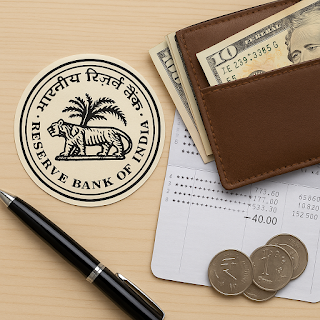SBI, PNB, HDFC, ICICI, and YES Bank Change Minimum Balance Rules: Know How Much You Now Need to Maintain
Bank accounts have become an essential part of our daily lives. Whether it's receiving a salary, saving money, or making digital payments—everything depends on a bank account. But did you know that maintaining a bank account comes with certain important rules? One of these key rules is the minimum balance requirement.
If you are a customer of SBI, PNB, HDFC, ICICI, or YES Bank, this article is crucial for you. These banks have recently updated their minimum balance policies, and if you’re unaware of the changes, your account could be charged a penalty.
🏦 What Is Minimum Balance?
Minimum balance is the minimum amount of money that must be maintained in your bank account at all times. This amount is fixed by the bank and varies depending on the type of account and the region (rural, semi-urban, urban, or metro).
If this amount is not maintained, the bank imposes a penalty on the account holder.
🏦 SBI (State Bank of India) Rules
SBI is India’s largest public sector bank with millions of customers.
-
New Rule: SBI has removed the requirement for maintaining minimum balance.
-
Effective From: This rule has been in effect since March 2020.
-
What It Means: Customers are no longer required to maintain any minimum amount in their savings account. There are no penalty charges, even if the balance is zero.
📌 Advantage: This is highly beneficial for small depositors or those with irregular income.
🏦 HDFC Bank Rules
HDFC Bank is a leading private bank in India. It follows a region-based minimum balance policy:
-
Metro/Urban Areas:
Minimum Balance – ₹10,000
Or an FD of ₹1,00,000 -
Semi-Urban Areas:
Minimum Balance – ₹5,000
Or an FD of ₹50,000 -
Rural Areas:
Typically, lower minimum balance requirements
❌ What Happens If You Fail to Maintain It?
-
The penalty is 6% of the shortfall amount or ₹600, whichever is lower.
📌 Example: If you maintain ₹5,000 instead of ₹10,000, the shortfall is ₹5,000.
6% of ₹5,000 = ₹300 → Penalty = ₹300
🏦 ICICI Bank Rules
ICICI Bank is another major private sector bank with strict minimum balance policies.
-
Monthly Average Balance Required: ₹5,000
-
Penalty: ₹100 flat + 5% of the shortfall amount
📌 Example: If you maintain ₹2,000 instead of ₹5,000, shortfall is ₹3,000.
5% of ₹3,000 = ₹150 + ₹100 = ₹250 total penalty
🏦 PNB (Punjab National Bank) Rules
PNB is a public sector bank and has different minimum balance requirements based on region:
| Area | Minimum Balance | Penalty Amount |
|---|---|---|
| Rural Area | ₹500 | Up to ₹400 |
| Semi-Urban Area | ₹1,000 | Up to ₹500 |
| Urban/Metro Area | ₹2,000 | Up to ₹600 |
📌 Important: Failing to maintain the specified minimum balance can result in monthly penalties as per the area and account type.
🏦 YES Bank Rules
YES Bank has a percentage-based penalty system for shortfall in minimum balance:
-
If balance is 50% or more of the requirement:
5% shortfall charge -
If balance is less than 50%:
Shortfall charge doubles to 10%
📌 Example: If the required balance is ₹10,000 and you maintain only ₹4,000, the shortfall is more than 50%. You will be charged a 10% penalty on the shortfall amount.
🆓 Zero Balance Accounts: No Minimum Balance Worries
If you're tired of maintaining minimum balances or facing penalties, zero balance accounts could be a great option.
-
No requirement to maintain any minimum amount
-
Offered by many banks like SBI, Axis, Kotak, etc.
-
Salary accounts usually also do not require a minimum balance
🧾 How Much Penalty Do Banks Charge?
Each bank has its own policy, but generally, the penalties range between ₹100 to ₹600 per month. In some cases, banks allow you to avoid this by opening a Fixed Deposit (FD).
| Bank | Minimum Balance | Penalty |
|---|---|---|
| SBI | None | No penalty |
| HDFC | ₹5,000–₹10,000 | Up to ₹600 |
| ICICI | ₹5,000 | ₹100 + 5% of shortfall |
| PNB | ₹500–₹2,000 | ₹400–₹600 depending on region |
| YES Bank | % based on shortfall | 5%–10% of the shortfall |
📜 RBI’s Guidelines on Minimum Balance
-
RBI allows banks to charge a penalty if the minimum balance is not maintained.
-
However, banks cannot overdraw or make the balance negative because of penalty deductions.
-
Account holders have the right to close the account without paying any penalty.
📌 Tips for Customers
-
Know your account type and regional classification (rural, urban, metro)
-
Regularly check your bank’s minimum balance policy
-
Understand monthly average balance (MAB) and track it
-
Consider switching to a zero balance or salary account
-
Keep track of SMS, emails, and app notifications from your bank
🧠 Conclusion
While bank accounts are convenient and essential, following their rules is equally important. Ignoring the minimum balance requirements can lead to unwanted penalties, reducing your hard-earned savings.
Staying informed about your bank’s policies and maintaining the required balance can save you from extra charges. If managing balance is difficult, switch to a zero balance or salary account to avoid these complications.
📢 Pro Tip:
If you have multiple bank accounts, consider converting one to a zero balance account. This will reduce your stress and help you manage your money more efficiently.





Comments
Post a Comment